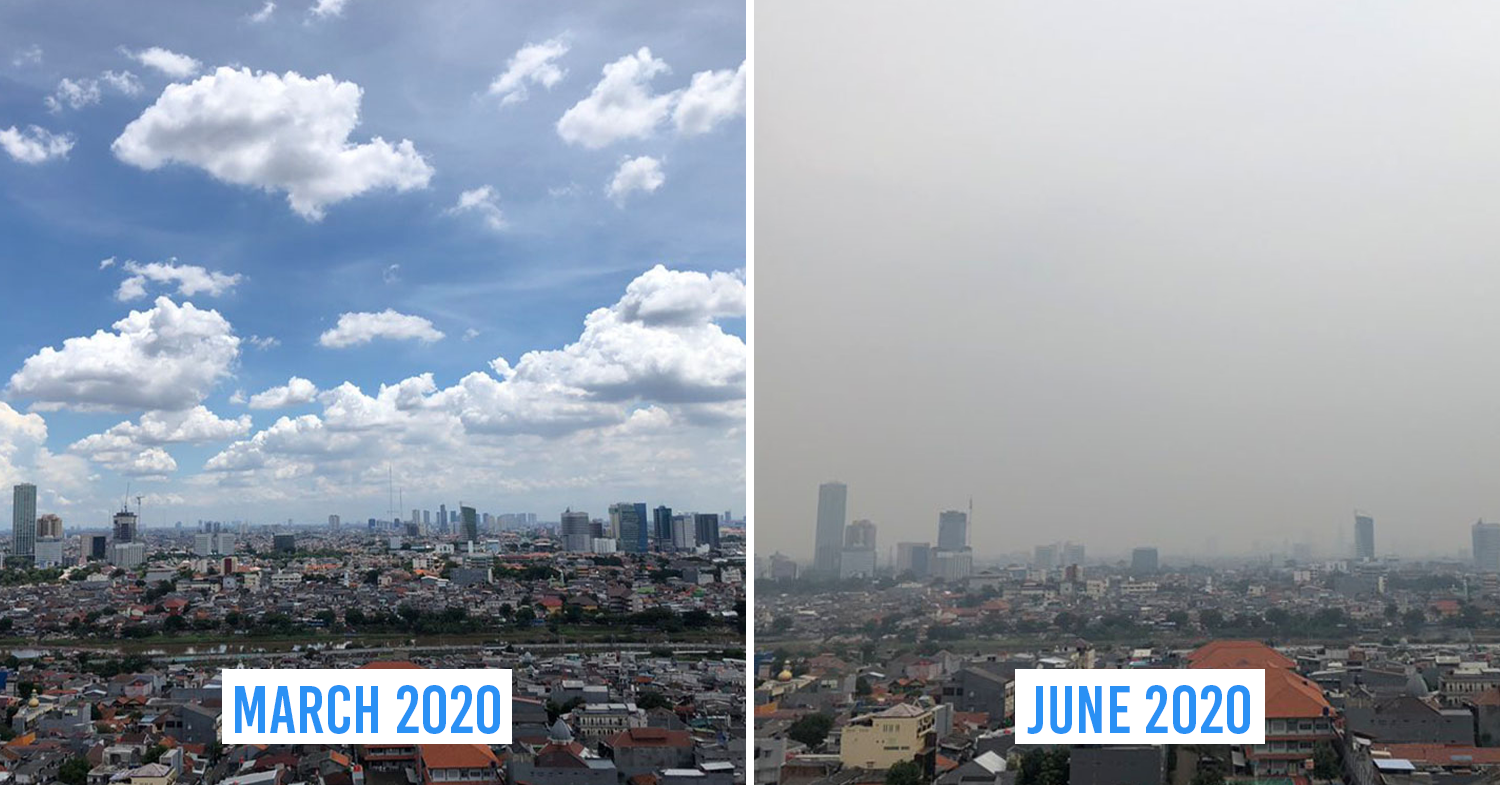Jakarta’s air pollution causes skies to turn grey again
Jakarta is not the city to go to if you’re looking for clear, blue skies. But for the past few months, large-scale social restrictions (PSBB) have given residents of the bustling capital the rare opportunity to enjoy fresh air and baby blue skies.
However, with the increased loosening of restrictions, the gloomy, grey sky that was once the standard view before COVID-19 is back again. The streets are no longer empty, and Jakartans might want to wear masks to not only protect themselves from the virus, but also from Jakarta’s air pollution.
No more blue skies as Jakarta’s air pollution returns
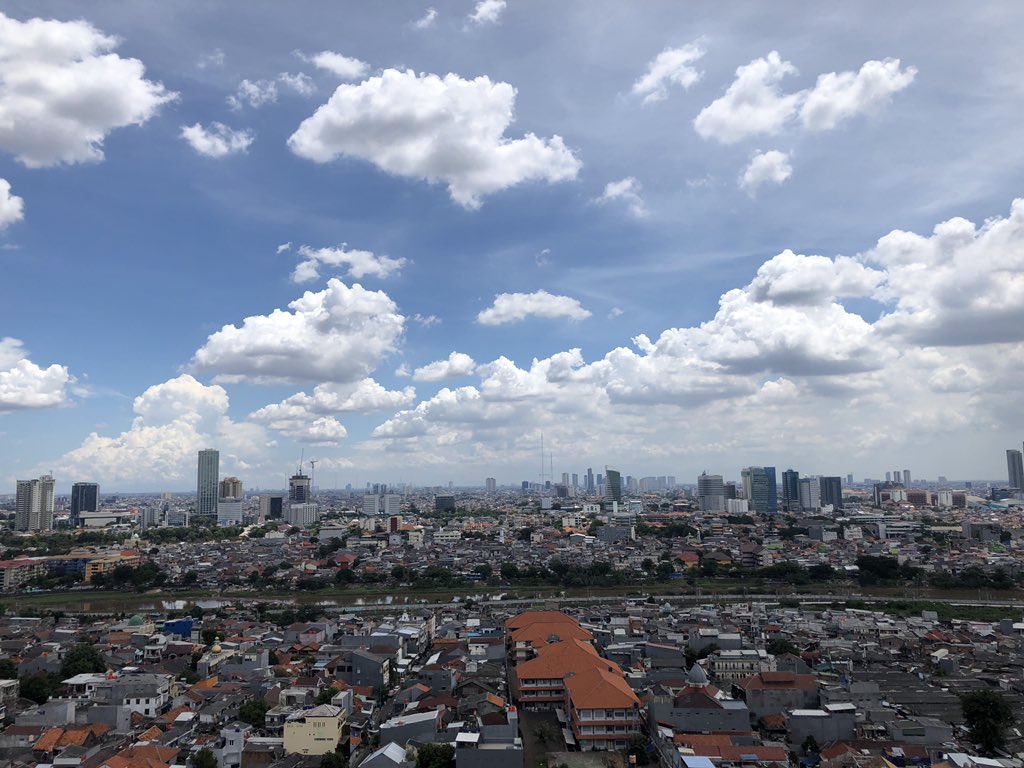
Jakarta in March 2020
Image credit: @restyworo
On 20th July 2020, journalist Resty Woro Yuniar posted two photos via Twitter that show a stark contrast between Jakarta’s sky in March – when stay-at-home orders began to be enforced – and in June. In the first picture, you see a blue sky and fluffy, white clouds, while in the second, all you see is the city’s skyline blanketed by a thick layer of smog.
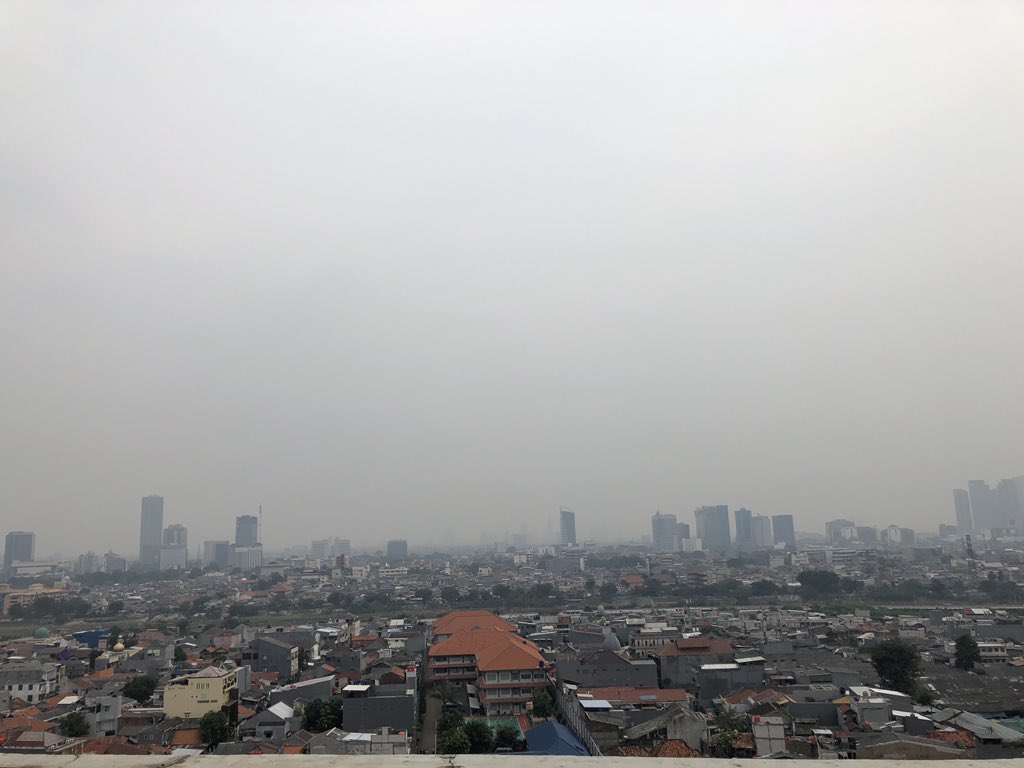
Jakarta in June 2020
Image credit: @restyworo
Jakarta is a city that is heavily reliant on cars and motorcycles, and those who have access to such vehicles might increasingly favor them over public transportation during the pandemic. The quick and visible change in the color of the sky will hopefully bring authorities’ attention to the future of the city’s air quality.
Jakarta’s overall air quality
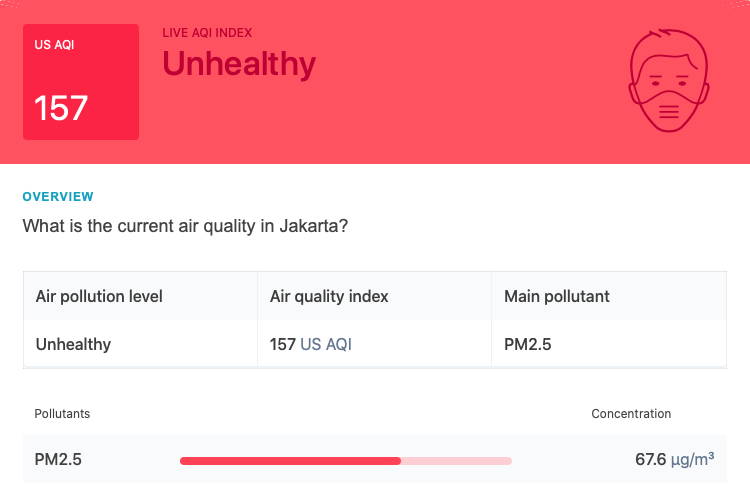
Jakarta’s AQI Index at the time of writing
Image credit: IQ Air
While the color of the sky is a clear indicator of change, it does not necessarily reflect the quality of the air itself. Crystal clear skies do not mean that the air isn’t harmful, especially to those suffering from respiratory conditions such as asthma or acute allergies.
As reported by The Jakarta Post, the air sensors at the US embassy in Jakarta show that between 10th April and 4th June, Jakarta’s air quality has never fallen into the “good” category as pollutants and particulate matter were still present.
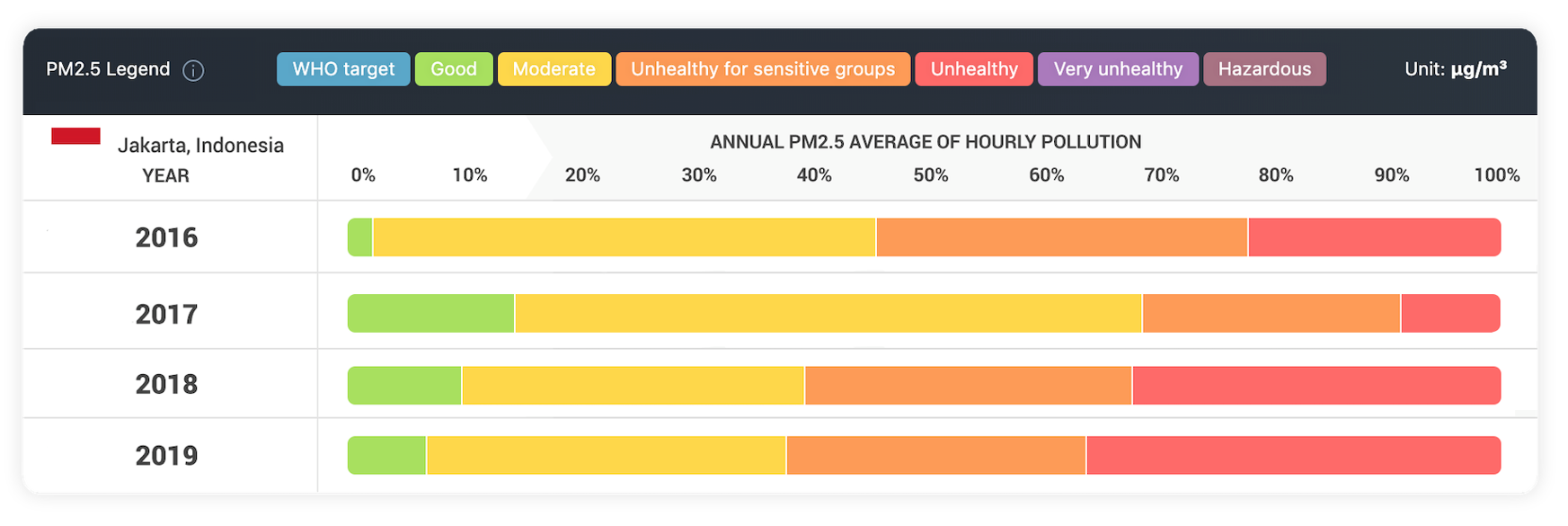 Annual PM 2.5 average per hour in Jakarta from 2016 to August 2019
Annual PM 2.5 average per hour in Jakarta from 2016 to August 2019
Image credit: IQ Air
The Air Quality Index, or AQI, is divided into 6 categories: Good, Moderate, Unhealthy for sensitive groups, Unhealthy, Very Unhealthy, and Hazardous. The WHO standards to measure air quality are used as a benchmark. For a location’s air quality to be deemed “good,” there cannot be more than 25 micrograms of fine particulate matter per cubic meter in the PM2.5 reading, which indicates the concentration of fine particulate matter.
At the time of writing, Jakarta’s air contains 67.6 micrograms/cubic meter of fine particulate matter, meaning that the city’s AQI is deemed Unhealthy at an index of 157.
To improve the overall quality of the air in Jakarta, the city needs to rethink its infrastructure and transportation systems. Car Free Day and a bike lane network are just the beginning.
Wear a mask with a PM2.5 filter against Jakarta pollution
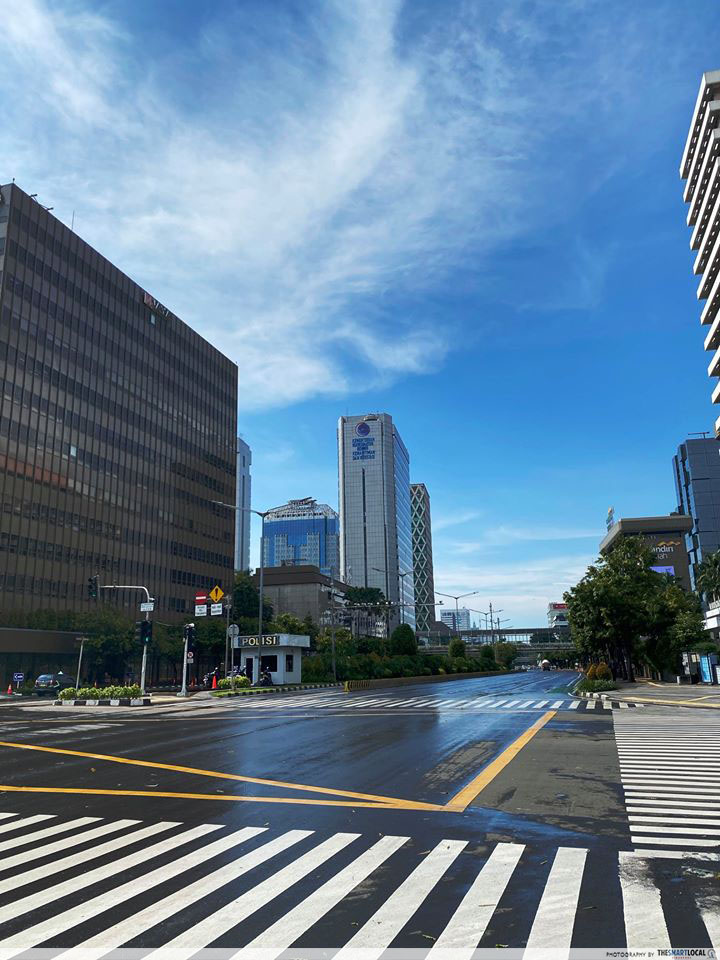
Sarinah intersection on 2nd April 2020
Improving Jakarta’s air quality might not be the number one priority given the ongoing COVID-19 pandemic. However, the quality of air that residents of any given place get to enjoy does have a huge impact on their health, and affects our daily well-being and livelihoods if it causes us to fall sick.
The condition of the environment and the living beings – including us – that inhabit it should not be treated as separate issues. Until we can enjoy healthier living conditions, wear a mask with an appropriate PM2.5 filter when you go out to help reduce both virus transmission and pollution inhalation.
Also read:
- Jakarta’s busy streets became pedestrian friendly
- Jakartans turn to cycling to get around during COVID-19
- Sleman woman makes transparent masks
- Indonesian fashion brands release trendy masks
Cover image adapted from: @restyworo
Enjoying The Smart Local Indonesia? Follow us on Facebook, Instagram, and Twitter for more stories like this.
